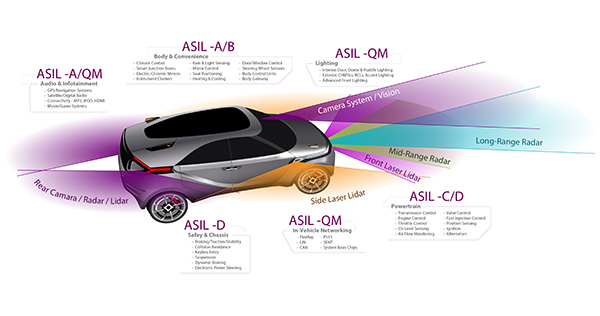
Advancements in vehicle technology have brought us systems designed to make driving safer and more convenient. One of these innovations is ADAS, or Advanced Driver Assistance Systems, which includes features like lane-keeping assist, automatic braking, and adaptive cruise control. While these systems enhance your driving experience, they also rely on precise calibration to function correctly. But what exactly is ADAS calibration, and why is it essential for your vehicle?
Let’s explore this crucial service and why it plays a significant role in ensuring both safety and performance on the road.
ADAS Calibration
ADAS calibration is the process of aligning the sensors, cameras, and radars in your vehicle to ensure they are working accurately. These components are responsible for gathering and communicating data about your surroundings to your car’s systems. For example, a front-facing camera might detect a pedestrian crossing the street, triggering the automatic braking system.
If these sensors are even slightly misaligned, the data they collect may be inaccurate, leading to malfunctioning features. Calibration ensures that every component is properly adjusted and aligned to the manufacturer’s specifications, allowing ADAS features to operate as intended.
Why Is ADAS Calibration Necessary
Modern vehicles are equipped with multiple ADAS features, each relying on accurate sensor data to perform critical safety functions. Here’s why calibration is essential:
Restoring Accuracy After Repairs or Replacements
Any repair or replacement involving your windshield, bumpers, or mirrors can throw off the alignment of ADAS components. For instance, replacing a windshield with an integrated camera or sensor will require calibration to ensure proper functionality. Even minor bumper damage can affect radar sensors, making calibration crucial after a collision.
Ensuring Optimal Safety
ADAS systems are designed to keep you safe by detecting obstacles, maintaining safe distances, and warning you of potential dangers. If these systems are out of calibration, their effectiveness diminishes, putting you and others on the road at risk.
Meeting Manufacturer Standards
Manufacturers specify precise calibration requirements to ensure their vehicles perform as advertised. Regular calibration helps maintain these standards, ensuring your vehicle operates at peak efficiency and safety.
When Should You Consider ADAS Calibration
Several situations may require you to schedule ADAS calibration. Knowing when to address this service can help you avoid potential safety risks:
- After a Windshield Replacement: If your car has a front-facing camera mounted on the windshield, it must be calibrated after the windshield is replaced.
- Following a Collision: Even minor accidents can misalign ADAS sensors. Calibration ensures all systems are functioning as intended after repairs.
- During Suspension or Alignment Work: Adjustments to your vehicle’s suspension or alignment can affect the positioning of ADAS components, making calibration necessary.
- Routine Maintenance: Over time, vibrations and wear can cause minor misalignments. Periodic calibration during routine maintenance ensures your ADAS systems stay accurate.
How Does ADAS Calibration Work
ADAS calibration is a detailed process that requires specialized equipment and expertise. There are two primary types of calibration:
Static Calibration
Static calibration is performed in a controlled environment, such as a repair shop. Technicians use specific tools and targets to adjust cameras and sensors to their correct positions. This method does not require the vehicle to be moving.
Dynamic Calibration
Dynamic calibration involves driving the vehicle on the road while connected to diagnostic equipment. This allows the system to adjust in real-world conditions, ensuring optimal accuracy.
Depending on your vehicle’s make and model, technicians may use one or both methods to complete the calibration process.
What Happens if ADAS Calibration Is Not Done
Failing to calibrate your vehicle’s ADAS can lead to several issues, including:
- Malfunctioning Safety Features: Features like automatic braking or lane-keeping assist may not activate when needed, increasing the risk of accidents.
- False Alerts: Misaligned sensors can trigger unnecessary warnings, distracting you from the road.
- Reduced Vehicle Value: Neglecting calibration can lead to long-term damage and reduced performance, affecting your vehicle’s resale value.
Simply put, skipping ADAS calibration compromises your safety and the reliability of your vehicle.
Tailored Calibration for Local Conditions
In places like Burbank, CA, where traffic and busy streets are common, properly calibrated ADAS systems are particularly valuable. Accurate lane-keeping assist and collision warnings can make navigating urban environments less stressful and more secure. Calibration tailored to local driving conditions ensures your vehicle performs reliably, even in high-demand settings.
Stay Ahead of Safety – Keep your ADAS systems performing their best with expert calibration services from Future Auto Service in Burbank, CA. Book your appointment today and drive with confidence.